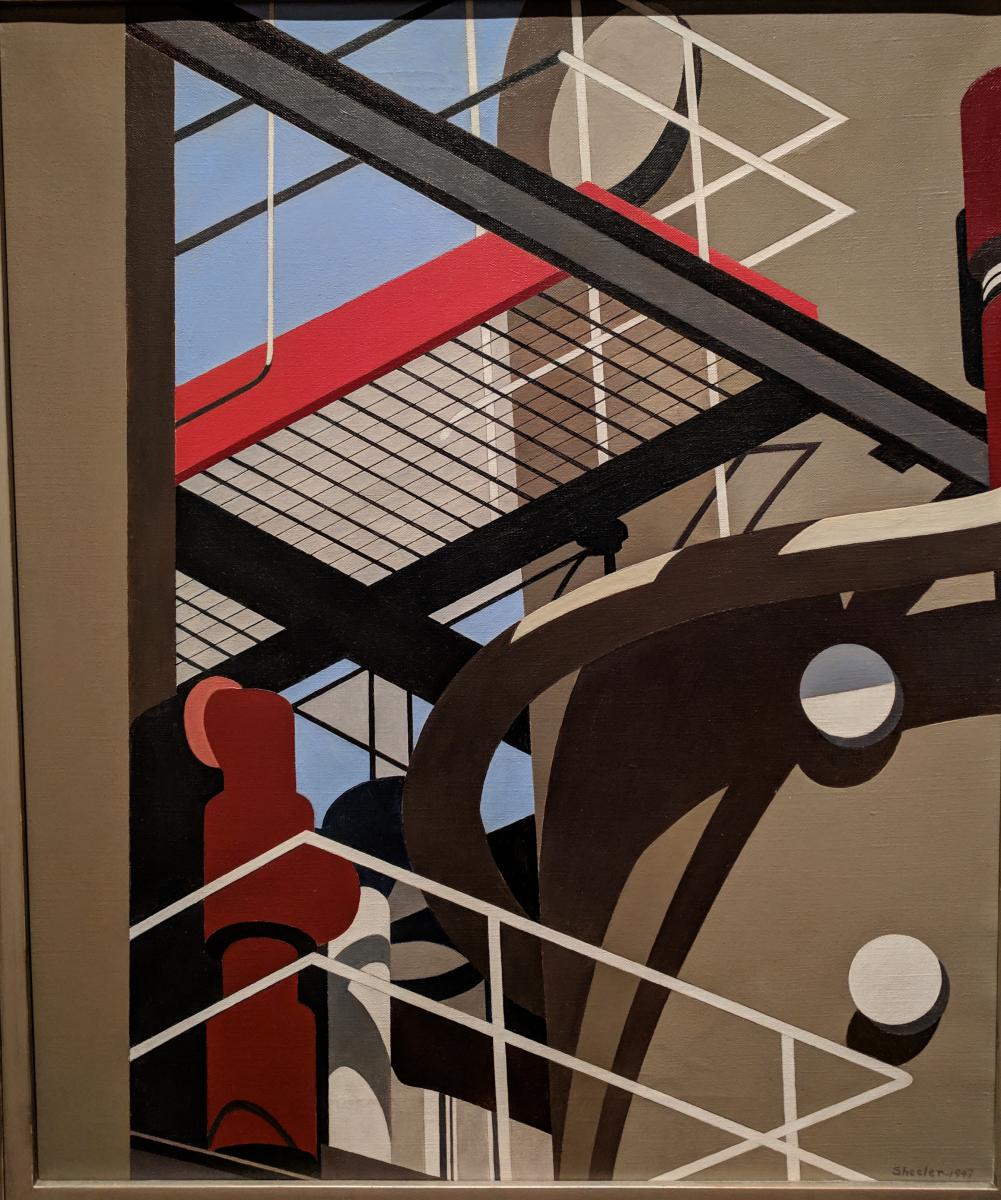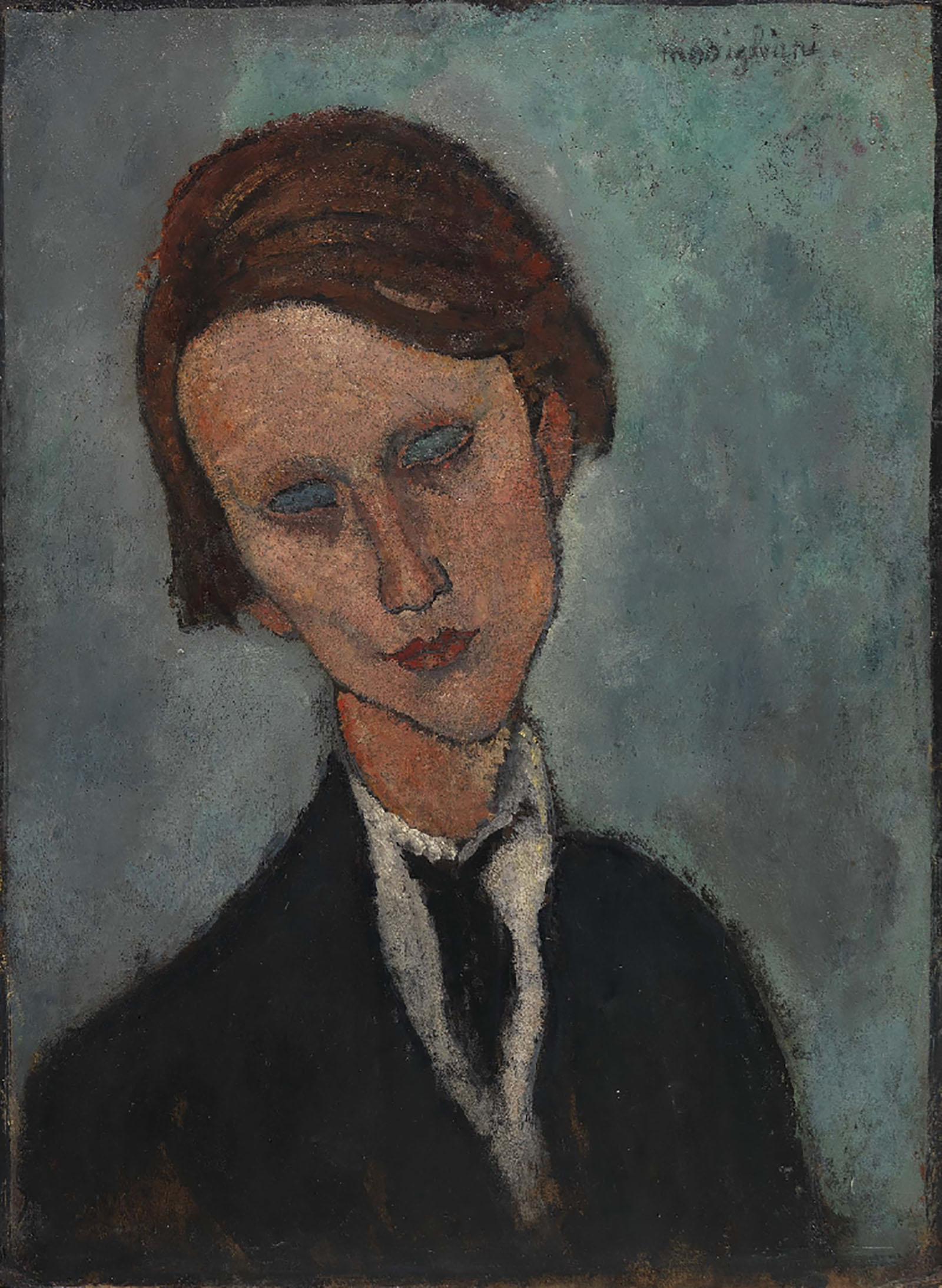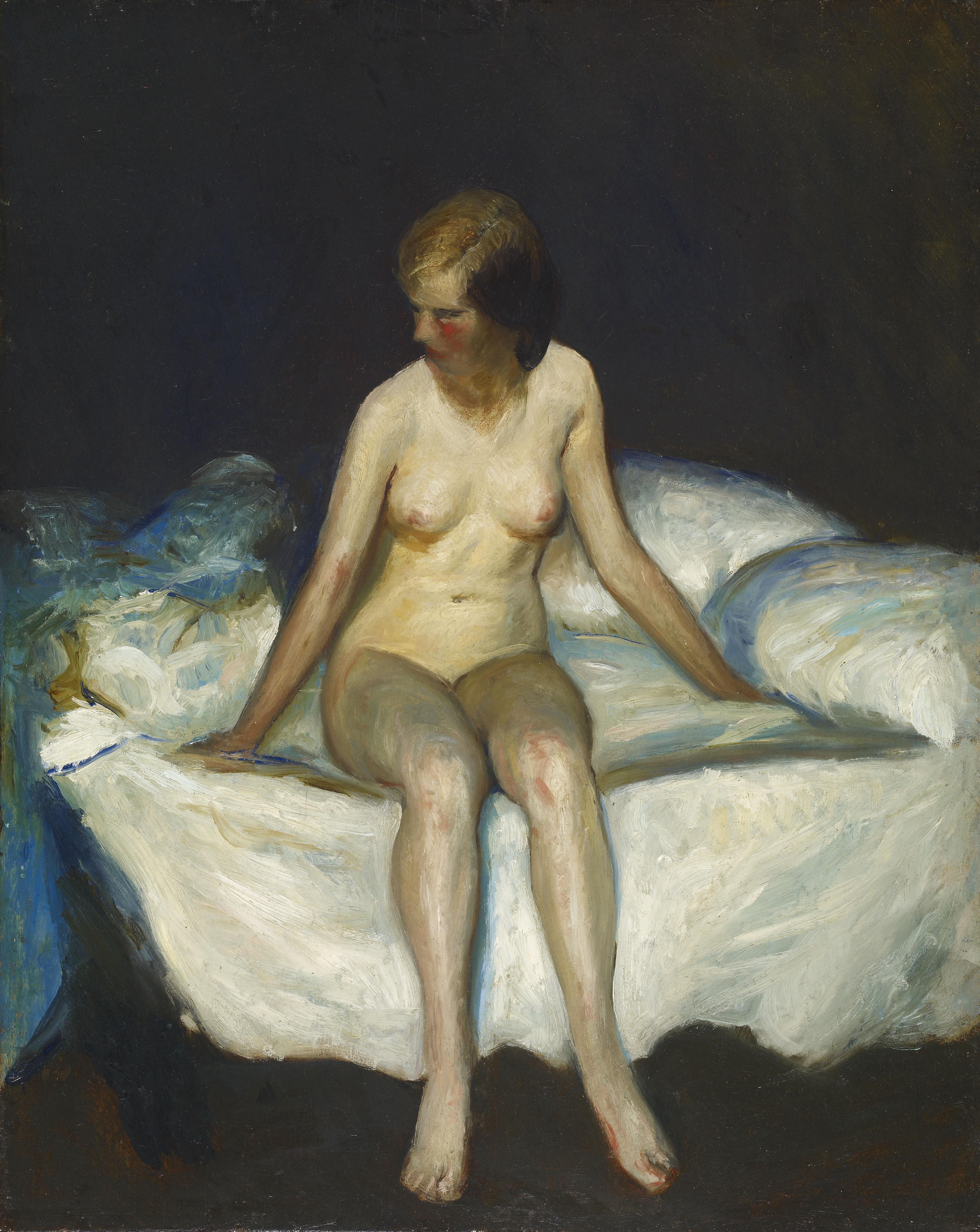Cat-Walk

In the mid-1940s, Charles Sheeler photographed a rubber plant in West Virginia, focusing on industrial details, including exterior pipes, cylinders, and cat-walks. The paintings he made from these photographs demonstrate his interest in overlapping shapes and shadows—in this picture, the function of the machinery is shown as being secondary to their appearance. In Sheeler's view, his industrial pictures were less about labor than about “the perception of order in the visual world…and its expression in purely plastic terms.”




